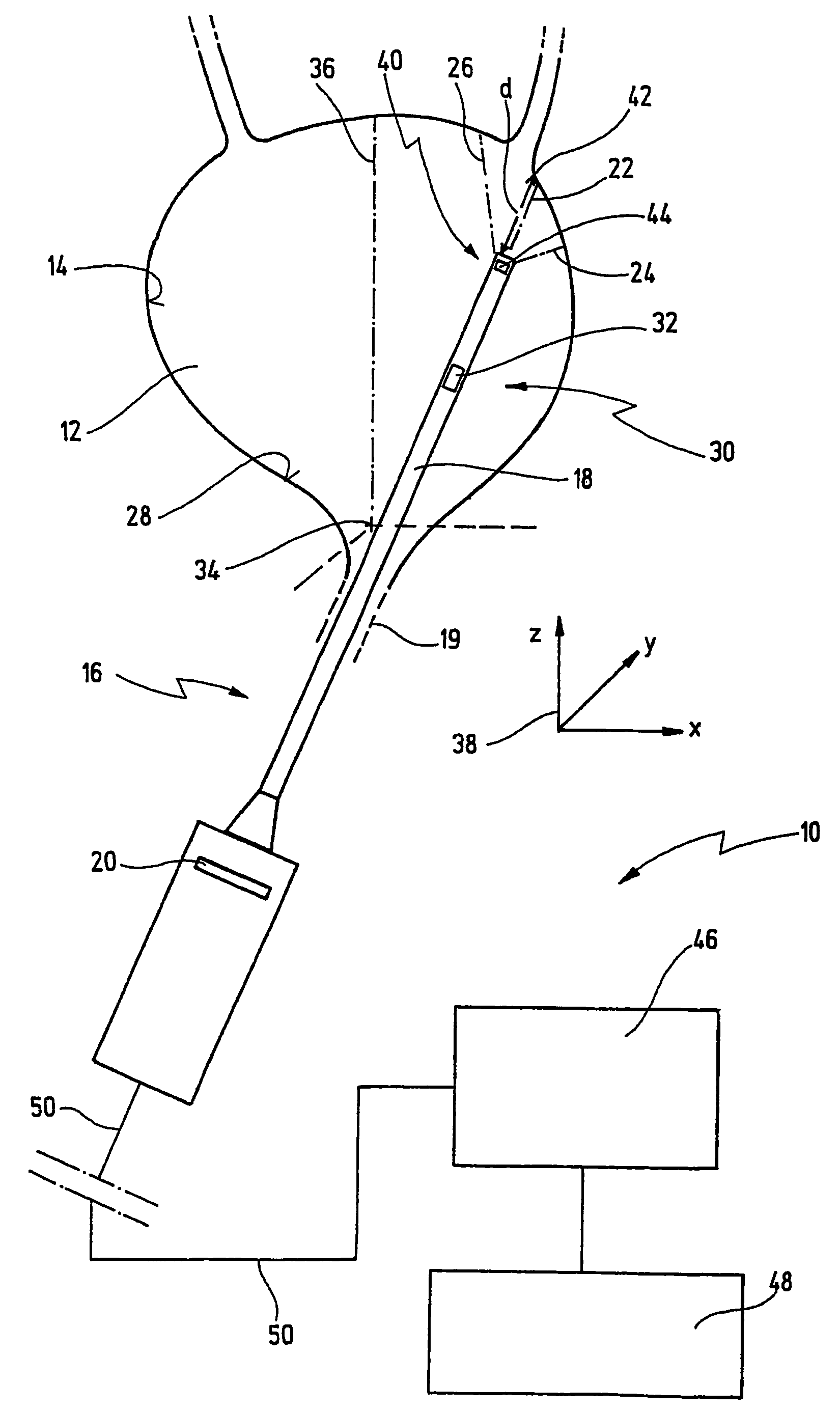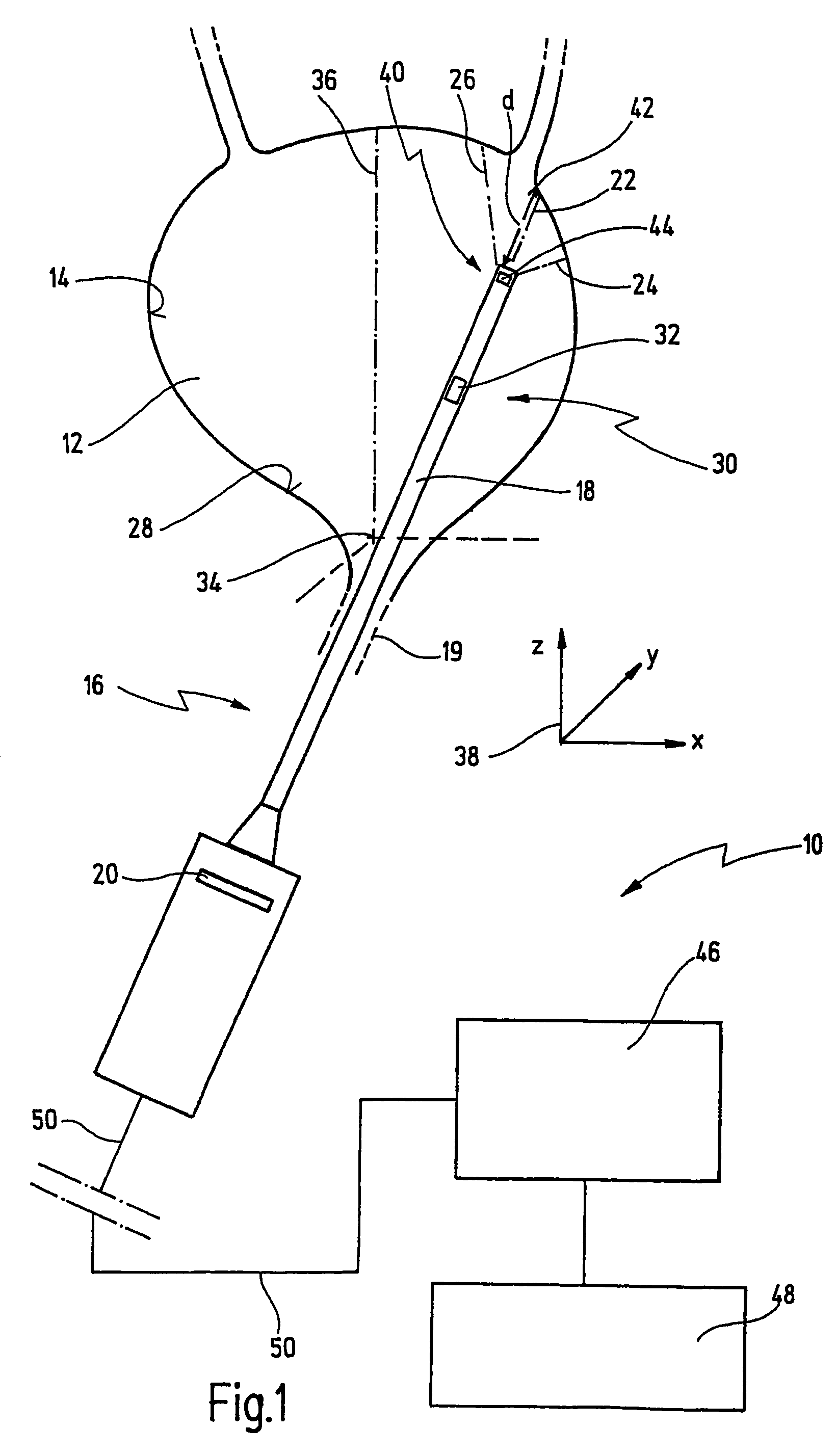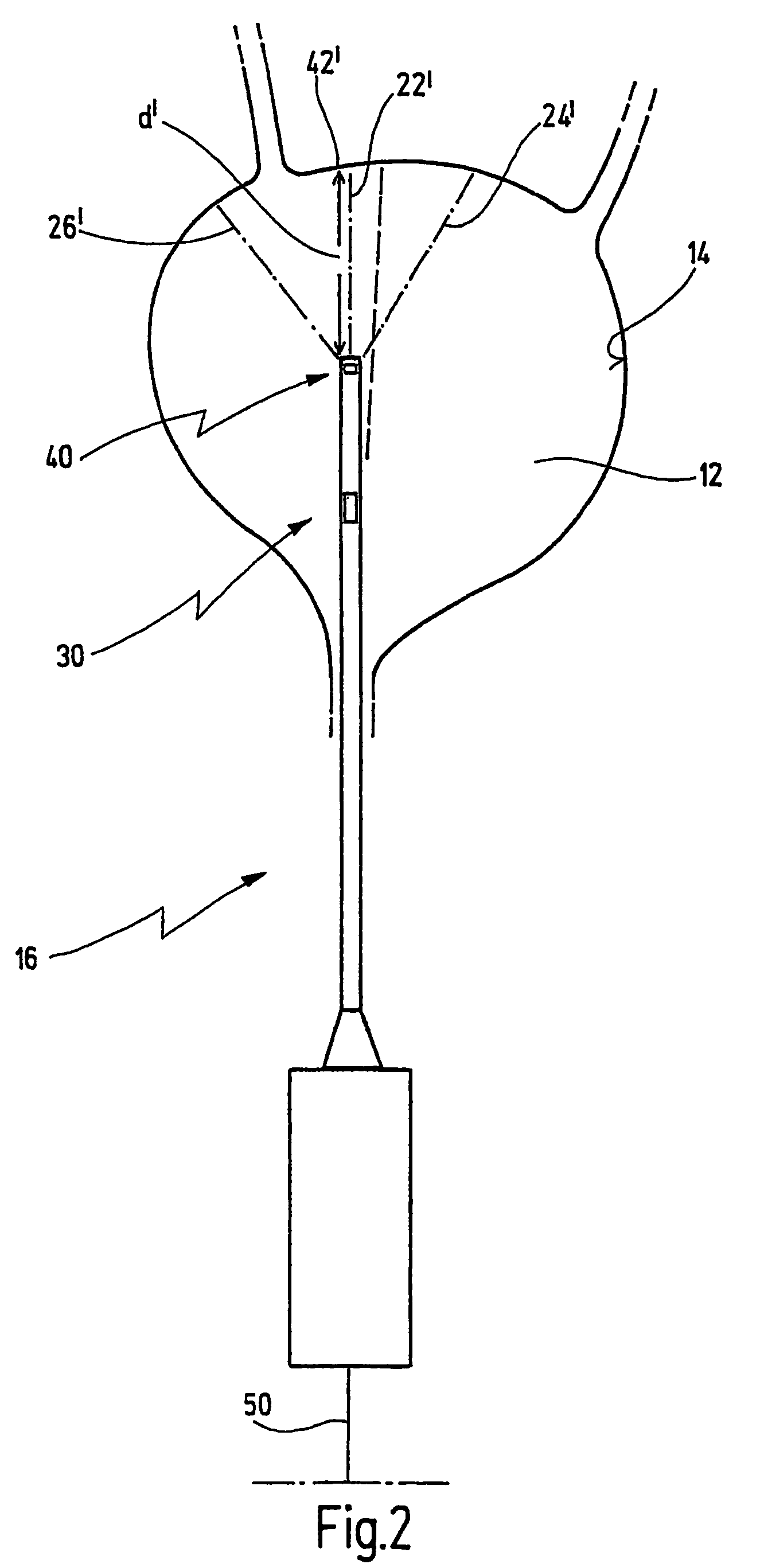Method and apparatus for generating at least one section of a virtual 3D model of a body interior
a technology of virtual 3d models and body interiors, applied in the field of methods and apparatus for generating at least one section of a virtual 3d model of the body interior, can solve the problems of serious consequences for patients, over-looked regions of the bladder wall, and difficulty in orienting the doctor in the substantially spherical interior of the bladder
- Summary
- Abstract
- Description
- Claims
- Application Information
AI Technical Summary
Benefits of technology
Problems solved by technology
Method used
Image
Examples
Embodiment Construction
[0053]FIG. 1 illustrates an apparatus, provided with the general reference symbol 10, for at least partially generating a 3D model of a body interior 12. In the exemplary embodiment shown, the body interior 12 is the bladder of a patient. More exactly, the apparatus 10 is used to acquire a surface 14 of the body interior 12 endoscopically in three dimensions. The apparatus 10 enables an endoscopic documentation of the preferably entire surface 14 of the body interior 12, and Is yet to be described hereafter.
[0054]The apparatus 10 has an endoscope 16 with a shaft 18, which endoscope and shaft can be introduced into the body interior 12. In the present exemplary embodiment, in which the body interior 12 is the interior of a bladder, the shaft 18 is introduced into the bladder via the urethra 19.
[0055]The endoscope 16 can be a so called rigid endoscope, that is to say in this case the shaft 18 is rigid, or the endoscope 16 can be a flexible endoscope, the shaft 18 then being of flexibl...
PUM
 Login to View More
Login to View More Abstract
Description
Claims
Application Information
 Login to View More
Login to View More - R&D
- Intellectual Property
- Life Sciences
- Materials
- Tech Scout
- Unparalleled Data Quality
- Higher Quality Content
- 60% Fewer Hallucinations
Browse by: Latest US Patents, China's latest patents, Technical Efficacy Thesaurus, Application Domain, Technology Topic, Popular Technical Reports.
© 2025 PatSnap. All rights reserved.Legal|Privacy policy|Modern Slavery Act Transparency Statement|Sitemap|About US| Contact US: help@patsnap.com



